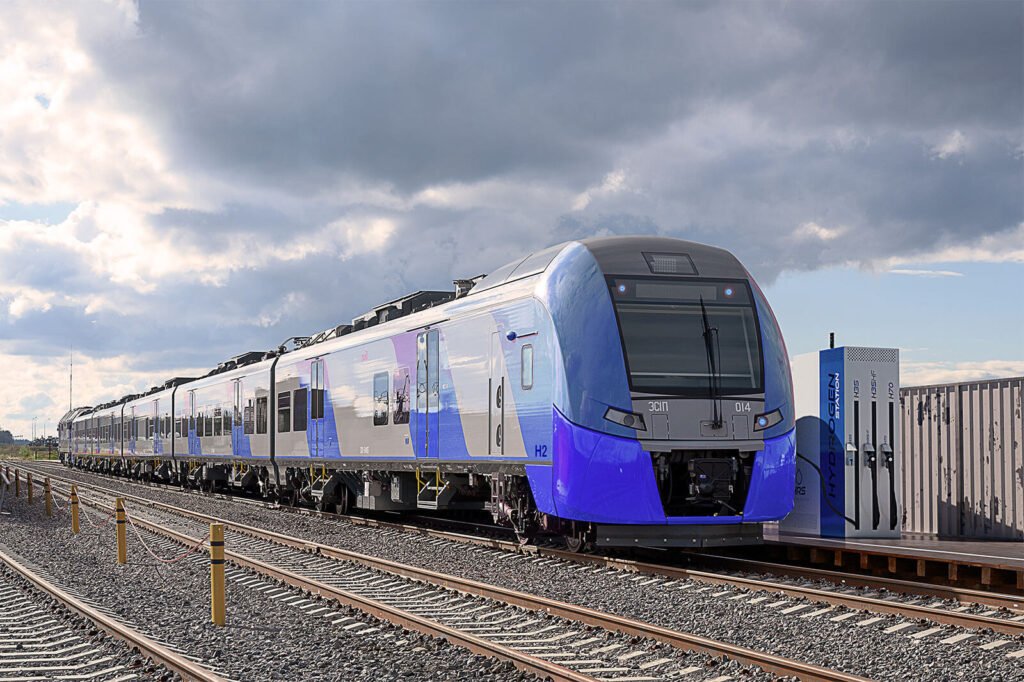Hydrogen coupled with electricity
Rail transport is already a largely electrified mobility sector, however 40% of lines in Europe1 are still not electrified, rising to 50% of lines in France2. Hydrogen coupled with a fuel cell is a solution for replacing diesel trains. It is also a target set in the roadmaps of many sector stakeholders and States.
Hydrogen offers strategic advantages on this market. Its range and the challenges posed by direct electrification for some types of routes, for example in mountainous regions with numerous structures such as tunnels and bridges, make hydrogen trains an ideal choice.

Hydrogen is perfectly suited to the rail network
Hydrogen trains are already running in Germany. France and Italy have announced their functional programme for this mobility type.
In 2022, Germany opened the world's first fully hydrogen rail line. Four French regions ordered 12 hydrogen regional trains in 20212. The first commercial routes are due to open in France in 2025. Diesel still represents 26% of the energy consumed by regional express trains, and is responsible for 77% of CO2 emissions. In 2023 the Italian government allocated €300 million for the deployment of hydrogen rail applications3.
Hydrogen trains
Hydrogen stored in the tanks is mixed with oxygen in the air inside the fuel cell, which is located on the roof of the train. This reaction generates the electricity required for the train's tractive power. The electricity can be consumed directly by the train's engines or stored in batteries.
Using this process, a hydrogen train has a range of up to 600 kilometres, transporting 220 passengers at 160 km/h2.
Dual-mode electric-hydrogen trains
Dual-mode trains combine a traditional overhead-line electric power supply with a fuel cell.
This train offers a response to the diversity of rail network types. Hydrogen can take over on sections with no electricity supply, offering a range of up to 600 kilometres on non-electrified sections of line.
1 European Commission
2 SNCF
3 Gouvernement
Advantages of hydrogen for trains

Long range
Full hydrogen or hybrid solutions offer a range of several 100 kilometres, guaranteeing continuity of service and compatibility with various types of rail line.

Fast recharging
Hydrogen refueling reduces vehicle standstill times. The fueling protocol enables fast refueling of heavy-duty vehicles: ~15 minutes for a 30 kg tank.

Reducing noise pollution
Hydrogen powered vehicles are very quiet for significantly lower noise pollution near rail lines.

Reliability and safety
Our stations are manufactured on an industrial scale. Our dispensers comply with fueling protocol SAE J2601/ISO 19880-1 T30 and are confirmed by the CEP (Clean Energy Partnership)

Reduced environmental footprint
Hydrogen vehicles produce electricity by combining H2 and O2, and emit only water vapour. No CO2 is emitted during this process.